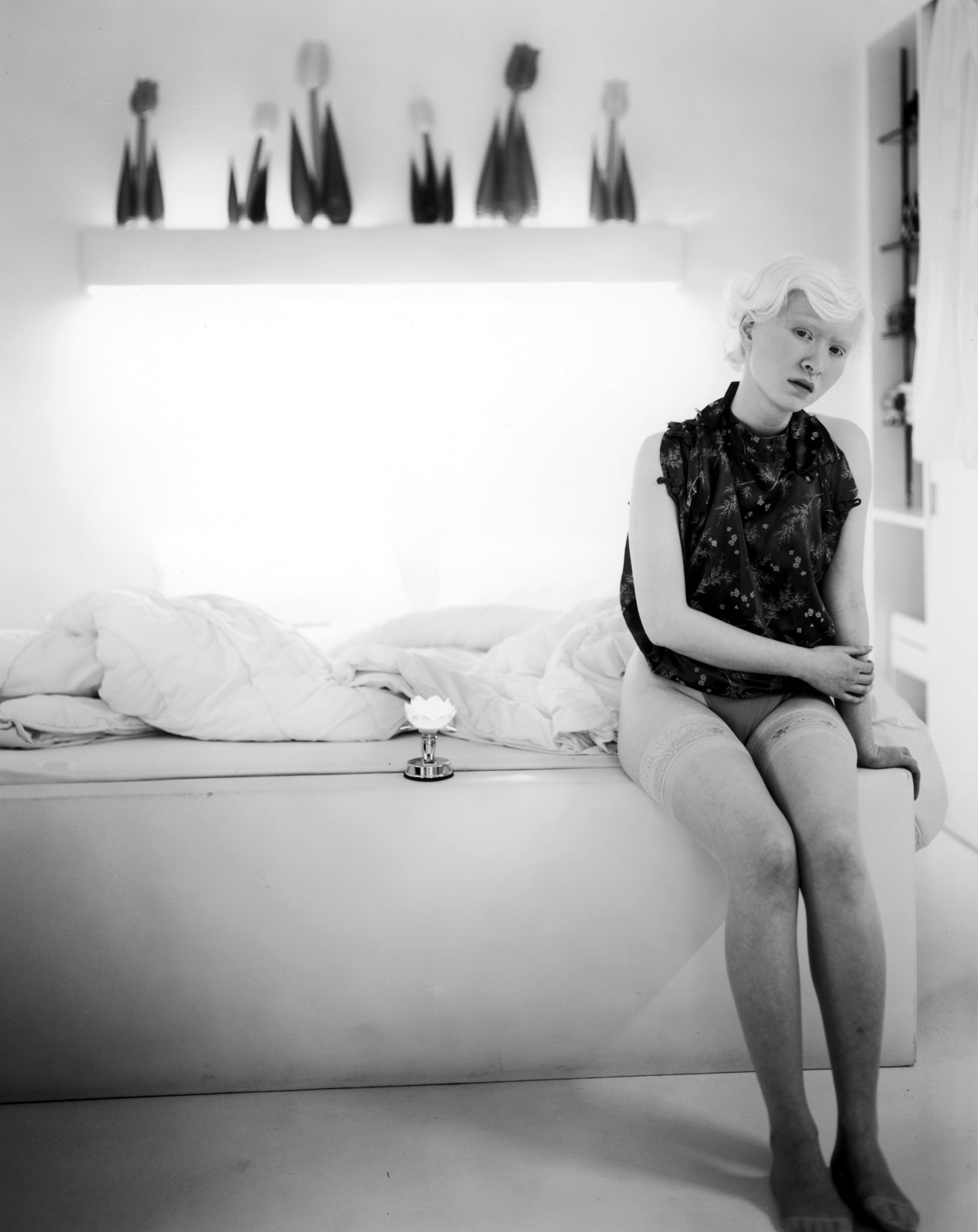Diana Lui
For English version please scroll down.
O SERIJI
Še preden postane umetniško delo, je akt Diane Lui predvsem podoba telesa, odsev družbenega okolja, kateremu pripada model, kakor tudi zgodovine, ki je oblikovala identiteto modela do te mere, da je podoba golega telesa tako intenzivna, da le to ne potrebuje več imena. Tukaj se ne soočamo z identiteto v smislu kakršnega uporablja državna administracija: fotografija v predpisani velikosti za potni list, ime, starost, državljanstvo. Golo telo, ki se razkriva pred nami, je del celote, in ima pogosto za seboj celovito zgodovino, ki je ne moremo okleščiti zgolj na nekaj podatkov, na nekaj » biografskih podatkov«, ki zgodbo držijo skupaj oz. »biografemov« - termin, ki ga je uporabil Roland Barthes. Hitro razumemo, da je Diana Lui izbrala ljudi, ki so ves čas v tranzitu, na potovanjih, srečanjih, ljudi, ki živijo klateško življenje in le kdaj pa kdaj za trenutek pristanejo na koncu dolgih in zanimivih popotovanj. Se te mlade ženske zgolj slečejo ali oblačila odložijo skozi diskurz? Golo telo, postavljeno na ogled, predvsem govori o umetnosti akta in ne razkriva veliko v smislu identitete in tega prav tako ne ponudi nekaj vrstic povzetih iz življenjepisa. Pravi vir identitete v teh paradoksalnih snemanjih »tančic« so oči, njihov izraz, pogled, h kateremu nas popelje umetničin pristop k portretu. Pogled je lahko osredotočen, kot pogled metalca kopja pred metom, lahko pa deluje tudi kot ščit, ki varuje misli in senzibilnost nebogljenega, izpostavljenega modela v občutljivem, a senzualnem stanju prepustitve. Raznolike človeške figure in telesne oblike pričajo o pestrosti narave. Nobeno telo ni sinonim za drugega, čeprav je vsem skupna krha nežnost ustvarjena z načinom fotografiranja. Oči so tiste, ki povedo največ, govorijo, razkrivajo misli in emocije. Omenjena kopja in ščiti so pravzaprav vaba. Tam niso zato da nas odženejo, ampak ravno nasprotno, da nas potegnejo v intimni svet, v zasebne sfere.
Anne Biroleau kustosinja, oddelek za fotografijo 21. stoletja, Bibliothèque Nationale de France
ABOUT THE SERIES
Before they become a work of art, Diana Lui’s nudes are images of a body, but they are also the reflection of the social environment the model belongs to as well as of the history that has formed its identity to the point that the mere image of the nude is so strong, a name associated with it becomes unnecessary. We are not faced with the concept of identity in the way a government office would define it: passport size photograph, name, age, citizenship. The nude body that is revealed here, in part of whole, often has a complex history that cannot be reduced to mere informational data, rather by a few “biographical themes” or “biographèmes”– a term used by Roland Barthes – that help put together a story. We understand quickly that Diana Lui has selected people floating in a certain transit, in travels, in encounters, the type of people who live a roving life and only land momentarily at the end of long and curious journeys. Do these young women simply undress physically or through their discourse? Although it speaks highly of the art of the nude, laying bare one’s body does not disclose much in terms of identity, nor do the few excerpts of biographical notes.
The real source of identity in this paradoxical unveiling is in the eyes, their expression, their gaze that Diana Lui’s artistic treatment of the image and quality of the portrait lead us to. The gaze can be tense like a dart ready to strike, but also be a shield to protect the thoughts and sensibility of a defenseless model left there in a delicate yet sensual state of abandonment. Nature’s diversity in body shapes and forms are clearly visible in the flesh. Yet, not one body resembles another, even if a certain and fragile grace created by the art of photography, links them together. The eyes however all speak to us, they look at us to reveal a thought or an emotion. But those darts and shields are in fact a decoy; they’re not there to frighten us away but on the contrary to pull us into an interior world.
Anne Biroleau, Curator, 21st Century Photography Department, Bibliothèque Nationale de France


